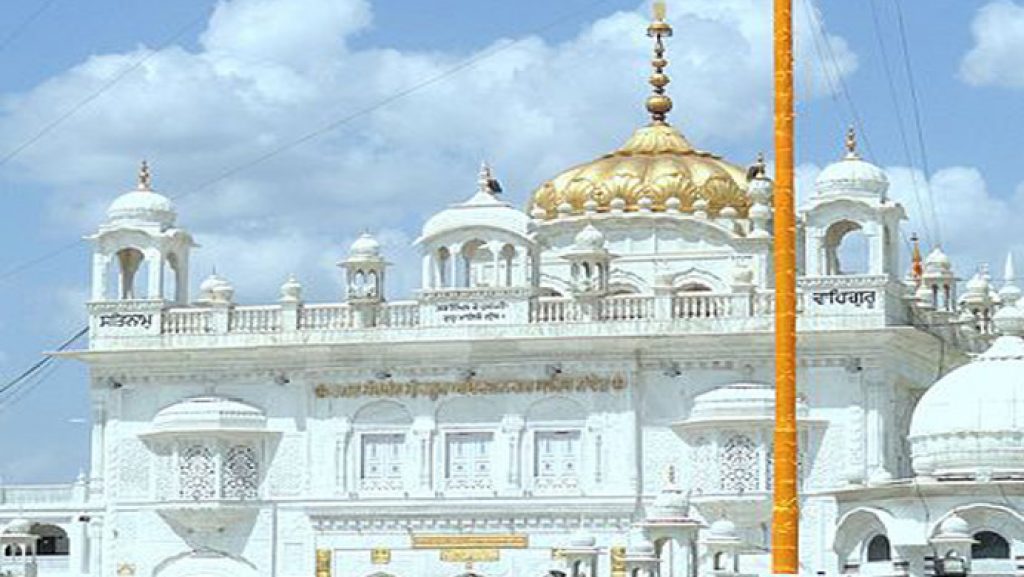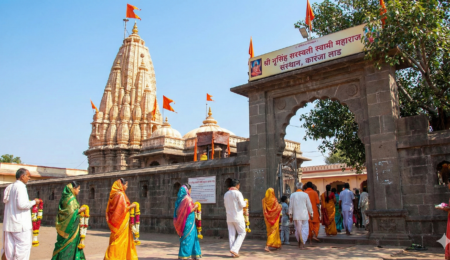Hazur Sahib Nanded: A Sacred Sikh Pilgrimage Site
Hazur Sahib Nanded
Hazur Sahib Also known as Takht Sachkhand Sri Hazur Abchalnagar Sahib, is one of the five Takhts (seats of authority) in Sikhism. Located in Nanded, Maharashtra, India, it holds immense historical and spiritual significance for Sikhs worldwide. This revered site marks the place where Guru Gobind Singh Ji, the tenth Sikh Guru, spent his final days and where he passed away in 1708.
Historical Significance
Hazur Sahib stands as a testament to the rich history of Sikhism. It was here that Guru Gobind Singh Ji held his final congregation and declared the Guru Granth Sahib as the eternal Guru of the Sikhs, thereby ending the line of human Gurus. This pivotal moment solidified the Guru Granth Sahib’s position as the central religious scripture in Sikhism.
The site also witnessed the transformation of Madho Das, a Bairagi Sadhu, into Banda Singh Bahadur after being baptized by Guru Gobind Singh Ji. Banda Singh Bahadur played a crucial role in establishing Sikh rule in parts of India and challenging Mughal authority.
Architectural Marvel
The architecture of Hazur Sahib is a blend of spiritual symbolism and artistic grandeur. Constructed between 1832 and 1837 under the patronage of Maharaja Ranjit Singh, the complex showcases intricate designs and embellishments. The main sanctum, known as Sach-Khand (Realm of Truth), is adorned with gold-plated walls and a dome, reflecting the opulence of Sikh architecture.
Inside the gurdwara, the Angitha Sahib marks the exact spot where Guru Gobind Singh Ji was cremated. This inner chamber is a place of deep reverence, housing relics associated with the Guru, including weapons and personal belongings.
Religious Importance
As one of the five Takhts, Hazur Sahib holds a position of high authority in Sikhism. It serves as a central hub for religious decisions and spiritual guidance. Pilgrims from around the globe visit the site to pay homage, seek blessings, and immerse themselves in the teachings of the Sikh Gurus.
The gurdwara complex is not only a place of worship but also a center for community service. The tradition of Langar (community kitchen) is practiced here, offering free meals to visitors, symbolizing equality and communal harmony.
Festivals and Events
Hazur Sahib is a focal point for numerous Sikh festivals and events. Significant occasions include:
- Prakash Gurpurab of Guru Gobind Singh Ji: Celebrating the birth anniversary of the tenth Guru with processions, kirtans, and community services.
- Hola Mohalla: A festival showcasing martial arts, poetry, and religious music, emphasizing the martial spirit of Sikhism.
- Baisakhi: Commemorating the formation of the Khalsa Panth in 1699, marked by religious ceremonies and community gatherings.
These events attract thousands of devotees, transforming the gurdwara into a vibrant hub of spiritual and cultural activities.
Visiting Hazur Sahib Nanded
Location: Nanded, Maharashtra, India.
How to Reach:
- By Air: The nearest airport is Shri Guru Gobind Singh Ji Airport in Nanded, approximately 5 kilometers from the gurdwara.
- By Train: Nanded Railway Station is well-connected to major cities like Mumbai, Delhi, and Hyderabad.
- By Road: Regular bus services and private vehicles connect Nanded to various parts of Maharashtra and neighboring states.
Accommodation: The gurdwara offers lodging facilities for pilgrims. Additionally, several hotels and guesthouses are available in Nanded to suit different budgets.
Best Time to Visit: October to March, when the weather is pleasant, making it ideal for sightseeing and attending festivals.
Also Read: Kirtan from golden temple live
Conclusion
Hazur Sahib in Nanded is not just a gurdwara; it’s a beacon of Sikh heritage, spirituality, and community service. Its historical significance, architectural beauty, and religious importance make it a must-visit for anyone interested in understanding the essence of Sikhism. Whether you’re a devout follower or a curious traveler, Hazur Sahib offers a profound experience that resonates with the soul.




Leave a Comment